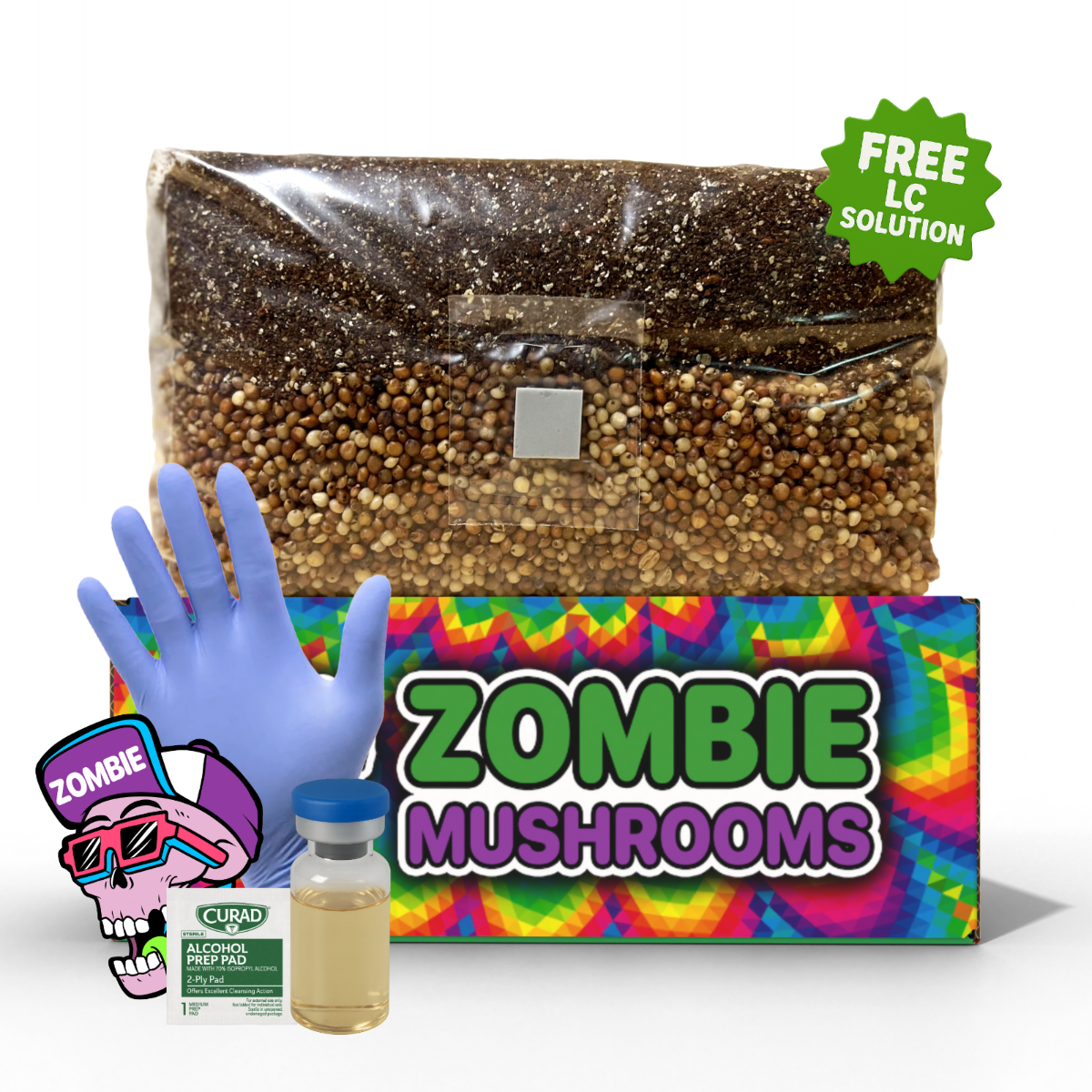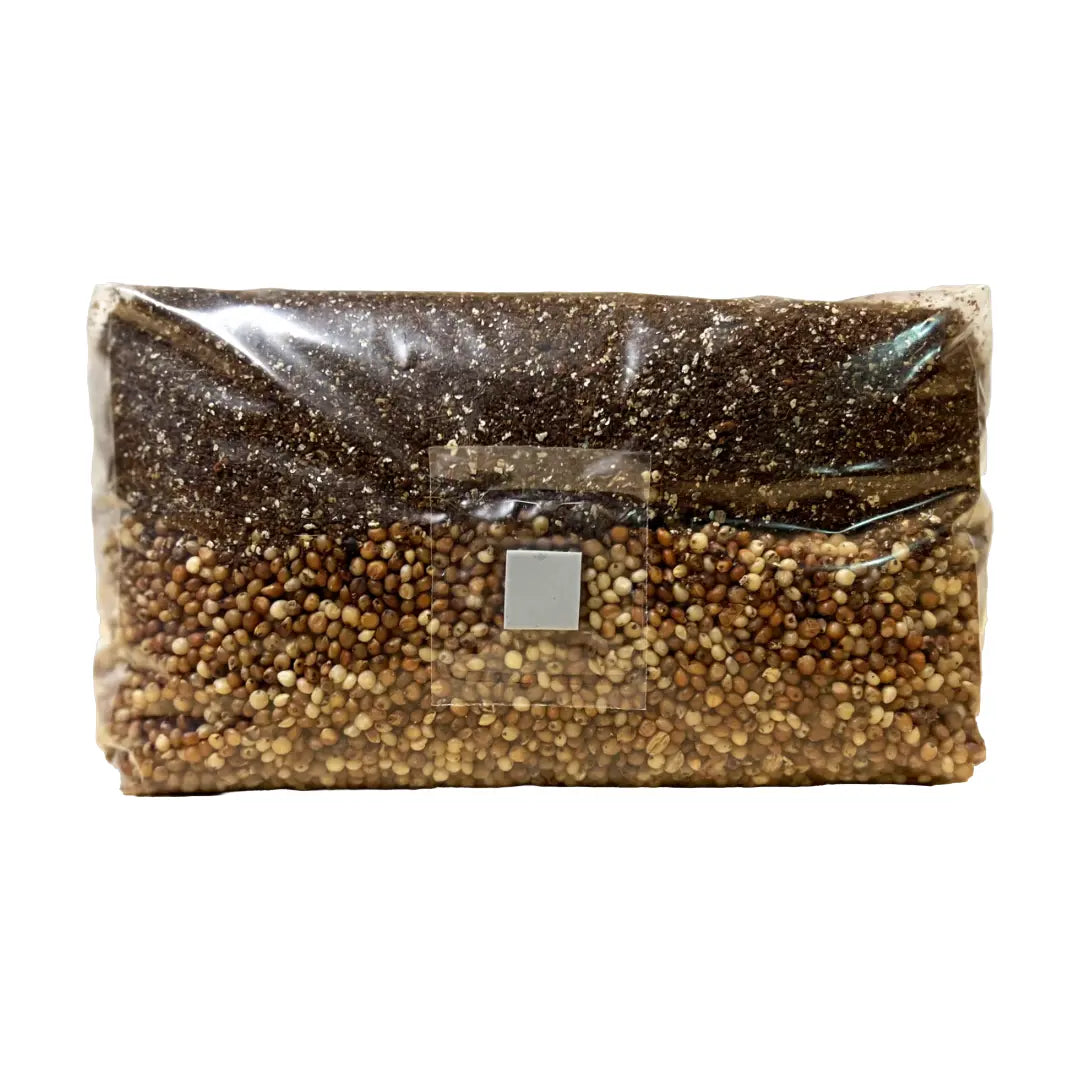⬇️ Prefer to listen instead? ⬇️
- Mushrooms can yield up to 30 pounds per square foot annually in optimized indoor systems.
- Mushroom cultivation consumes 90% less water and land than most vegetables.
- A single outdoor log can produce mushrooms for up to five years.
- Gourmet mushrooms like Shiitake can retail for $14 to $18 per pound.
- Environmental control and contamination management are critical to high yield.
Mushroom farming is catching the attention of hobby gardeners, eco-conscious consumers, and aspiring entrepreneurs alike—and for good reason. Cultivating mushrooms offers impressive returns, uses minimal space, and requires far fewer resources than most crops.
But when it comes to how you grow them, not all methods are created equal. From indoor mushroom cultivation in temperature-controlled grow rooms to rustic outdoor mushroom farming with logs and straw beds, learning the right technique can set you on the path to consistent, healthy harvests.
Let's look at your options and help you choose the best mushroom farming method for your goals and resources.

Benefits of Mushroom Farming
Whether you're scaling up in a commercial grow room or trying your hand in a backyard space, mushroom farming offers unique advantages that make it stand out from traditional agriculture.
- Limited space requirements: You don’t need a greenhouse or acres of land. Mushrooms thrive in compact, controlled environments like basements, spare rooms, closets, or even under your kitchen sink.
- Speedy production cycles: Most mushroom varieties are fast-maturing, producing harvestable crops in 3 to 6 weeks. This allows multiple growing cycles per year and faster returns.
- Eco-friendly cultivation: Mushroom substrates often use agricultural byproducts such as straw, sawdust, coffee grounds, or even paper waste. This form of recycling dramatically reduces landfill waste and adds value to what would otherwise be discarded.
- High-yield potential: Vertical stacking, especially in indoor mushroom cultivation, allows you to multiply your growing surface for greater productivity. Oyster mushrooms, for instance, can yield up to 30 pounds per square foot annually based on controlled conditions.
- Low water & energy use: Compared to other crop types, mushrooms require surprisingly little water and land, making them a sustainable solution for global food systems.
As a bonus, mushroom farming pairs well with other permaculture or regenerative gardening practices. It can be used in waste systems or along with bee keeping and compost gardening for benefits that work together.

Indoor Mushroom Cultivation: Advantages & Considerations
Indoor mushroom cultivation is the dominant method for commercial growers and serious hobbyists alike. It eliminates the unpredictability of nature while maximizing control over the fungal lifecycle.
Advantages of Indoor Mushroom Cultivation
- Year-round production: Since environmental factors are fully adjustable, indoor mushroom cultivation lets you grow across all seasons.
- Optimized yields: You can fine-tune CO₂ levels, temperature, humidity, and lighting for species-specific performance.
- Urban feasibility: If you live in a city or area with poor outdoor growing conditions, going indoors is your best bet.
- Enhanced cleanliness: Controlled settings reduce contamination risk and increase consistency.
- Better financial potential: With higher yields per square foot and multiple harvests annually, margins are stronger for entrepreneurs.
Considerations and Challenges
- Initial investment: Equipment like grow lights, humidity controllers, air filters, and environmental sensors can drive costs up.
- Space management: You’ll need racks or growing containers, and thoughtful layout designs to ensure airflow and ease of maintenance.
- Daily upkeep: Environmental fluctuations, air circulation, and sanitation must be monitored, often on a daily basis.
- Energy use: Depending on setup and automation, utility bills can spike, particularly where HVAC and lights are used intensively.
Despite the costs, optimized indoor systems provide unmatched productivity. For example, a modest 100-square-foot grow room can yield over 3,000 pounds of Oyster mushrooms per year.

Outdoor Mushroom Farming: Benefits and Limitations
Outdoor mushroom farming leans into the simplicity of nature and is particularly effective for long-term, low-maintenance mushroom species.
Why Outdoor Mushroom Farming Works
- Low operating costs: Without the need for HVAC systems, lighting, or advanced monitoring devices, your expenses remain minimal.
- Natural integration: You can grow mushrooms alongside trees, gardens, or in shaded woodlots without disrupting existing ecosystems.
- Passive cultivation: Once established, many outdoor systems can be left largely unattended apart from watering and periodic harvesting.
- Sustainability focus: Outdoor mushroom farming, especially using logs and forest byproducts, is a low-impact way to farm that helps with biodiversity.
Limitations and Risks
- Seasonal dependence: Outdoor systems are affected by changes in temperature, rainfall, and light. Productivity can dip in extreme cold or heat.
- Increased pest pressure: Slugs, beetles, rodents, and gnats often find outdoor mushroom setups alluring.
- Inconsistent yields: Fluctuating environmental factors can lead to unreliable harvests.
- Startup lag: Methods like log cultivation offer long-term productivity but may require 6 to 12 months before the first fruiting.
Still, the rewards add up—Shiitake logs, for example, can produce for four to five years after inoculation, yielding 1 to 2 pounds each annually.

Hybrid Cultivation Systems
Not sure whether indoor or outdoor mushroom farming is right for you? Many successful growers create hybrid cultivation models that combine the strengths of both methods.
Common Hybrid Techniques
- Indoor incubation, outdoor fruiting: Some growers begin mycelium colonization indoors and move the substrate outdoors when ready to fruit.
- Seasonal adaptations: Grow outdoors in spring and fall when conditions are ideal; move indoors during hotter or colder months.
- Complementary systems: Operate both indoor chambers for faster-growing varieties like Oyster, and maintain outdoor beds for longer-cycle species like Wine Caps or Shiitake.
Why Hybrid Systems Work
This mixed-method approach makes your setup stronger. Hybridization allows growers to extend their season, diversify species, and reduce risk, no matter the area.

Low-Tech Mushroom Farming Methods
Low-tech techniques use simple tools and natural materials. They are ideal for beginning growers, homesteaders, or educators.
Popular Low-Tech Methods
-
Log Inoculation:
- Use freshly cut hardwood logs like oak or maple.
- Drill holes, insert plugs or sawdust spawn, and seal with wax.
- Stack logs in shady outdoor spots.
-
Straw Beds:
- Pasteurize straw, pack into bags or beds, mix with Oyster mushroom spawn.
- Keep in a humid environment until mycelium colonizes and fruits.
-
Wood Chip Beds:
- Spread wine cap or other mulch-loving spawn with cardboard sheets beneath.
- Works under perennial shrubs, garden paths, or forest edges.
Pros & Cons
Pros:
- Minimal startup cost
- Great educational tool or hobby
- Utilizes compostable materials
Cons:
- Slow establishment (especially for logs)
- Runs seasonal with fewer yearly harvests
- Vulnerable to wildlife and pests
The main appeal of low-tech methods is that they are easy to get into—most people can do them and they are still productive with proper care.

High-Tech Mushroom Farming Systems
As demand for gourmet, medicinal, and niche mushrooms expands, high-tech mushroom cultivation methods have become the main way for commercial growers.
Key Technologies in High-Tech Systems
- Environmental controls: HVAC systems, digital humidifiers/dehumidifiers, and temperature automation provide stable growth conditions.
- Sterile labs: Use of HEPA filtration, laminar flow hoods, and autoclaves helps ensure contamination-free spawn production.
- Sensor data & IoT: Apps and dashboards track environmental metrics to optimize performance in real time.
- Vertical farming: Advanced rack and shelving systems multiply grow space.
Benefits of Tech-Powered Growing
- Maximized yields and tighter crop cycles = higher profitability.
- Consistent product quality ideal for restaurants and gourmet markets.
- More flexibility in mushroom species grown (e.g., Lion’s Mane, Enoki).
- Longer storage and shelf life due to controlled harvesting and drying.
Downsides
- Expensive to build and run
- Requires technical knowledge
- Maintenance-heavy and reliant on electricity
These models are often best suited for full-time growers, food entrepreneurs, or commercial-scale operations who want to sell to urban markets.
Factors to Consider When Choosing a Method
Selecting the right mushroom farming technique boils down to:
- Available space: No yard? Indoor mushroom cultivation may be best.
- Startup budget: Low-tech outdoor farming costs less but trades off control and speed.
- Goals: Are you aiming for a business, side income, or personal food supply?
- Target species: Know the environmental needs of the mushrooms you want to grow.
- Labor availability: How much time can you dedicate for maintenance and harvesting?
By clarifying your intent and what you can and can't do early, you're less likely to waste time and resources adjusting mishandled systems after the fact.

Types of Mushrooms and Suitable Growing Conditions
Choosing the right variety can make or break your success. Here's a quick breakdown:
| Mushroom | Best Method | Substrate | Notes |
|---|---|---|---|
| Button (Agaricus bisporus) | Indoor, trays | Compost or manure | Beginner-friendly, most commonly consumed |
| Oyster (Pleurotus spp.) | Indoor/outdoor | Straw, sawdust | Very fast growth, forgiving for new growers |
| Shiitake (Lentinula edodes) | Outdoor logs | Hardwood logs | Slower fruiting, high market value |
| Lion’s Mane (Hericium erinaceus) | Indoor, high-tech | Hardwood blocks | Requires sterile environments, very profitable |
| Wine Cap (Stropharia rugoso-annulata) | Outdoor | Wood chips | Great for backyard gardens, needs space |
Selecting species aligned to your setup increases your chances of success and helps improve how much you get back if you're growing commercially.

Common Challenges in Mushroom Farming
Mushroom cultivation isn’t without obstacles, no matter how skilled you are.
- Contamination: Invisible bacteria or mold spores can ruin entire batches.
- Pests: Insects and slugs can decimate harvests or introduce diseases.
- Humidity/CO₂ imbalance: Poor airflow raises CO₂ and drops yield.
- Inconsistent temperature: Mushrooms are sensitive to thermal fluctuations.
- Mis-timed harvests: Picking too early or too late affects mushroom flavor, texture, and value.
Learning to read the signals (cap curl, discolored mycelium, sour smells) and responding quickly helps minimize loss.

Solutions and Best Practices
Whether you're cultivating mushrooms in a forest or a high-tech grow tent, the following rules can help every grower improve outcomes:
- Pasteurize or sterilize all substrates before inoculating with spawn.
- Daily monitoring with accurate thermo-hygrometers and CO₂ meters keeps the environment optimal.
- Fresh air exchange (FAE) should be consistent—stale air promotes contamination.
- Sanitize tools and hands every time you interact with the grow area.
- Use proper spawn ratios based on substrate type (generally 5 to 10% by weight).
- Harvest on time—too early and mushrooms won’t reach full size; too late and they may drop spores or rot.
Implementing these habits makes your setup stronger and helps you grow more regardless of the farming method.
Profitability Potential in Mushroom Farming
Indoor and outdoor mushroom farming strategies both offer strong profitability when executed properly.
- Direct-to-consumer pricing: At farmer’s markets, gourmet mushrooms fetch retail prices of $14 to $18/lb.
- Low cost of inputs: Especially for low-tech growers using free or local materials.
- High turnover potential: Indoor mushroom cultivation enables multiple harvest cycles annually.
- Dried mushrooms, extracts, seasoning powders, and DIY kits provide multiple revenue streams.
Even at small volumes, a part-time grower can earn $500 to $2,000/month depending on product type and customer reach.
Smart Marketing Tips for Mushroom Growers
Your marketing approach is just as important as your growing technique.
- Share the story: Highlight sustainability, health benefits, or your urban-farm story.
- Use visuals: Mushrooms photograph well—maximize impact on Instagram, TikTok, and local classifieds.
- Offer recipes: Consumers are more likely to buy if they see how to use it (great for Lion’s Mane and Oyster).
- Engage chefs & markets: Reliability and quality matter more than price to many foodservice buyers.
- Educate: Host workshops, tastings, or foraging tours to connect with your community.
Brand yourself as more than a seller—become a mushroom ambassador.
Business Expansion Opportunities
Think beyond the harvest:
- Retail spawn and grow kits
- Sell packaged dried mushrooms for pantry use
- Create mushroom tinctures, powders, or skincare products
- Offer subscription boxes or CSA-style mushroom shares
You can even incorporate mushroom mycelium into sustainable packaging or leather alternatives, broadening your market beyond food.

Choosing Your Ideal Mushroom Cultivation Method
There is no one-size-fits-all approach to mushroom farming. Whether you use low-tech outdoor methods or high-tech indoor mushroom cultivation, the key is picking a method that fits your environment, resources, and goals.
- Start small
- Experiment with species
- Scale successes
- Be flexible
With the right strategy, mushroom cultivation becomes one of the most empowering forms of small-scale farming.



